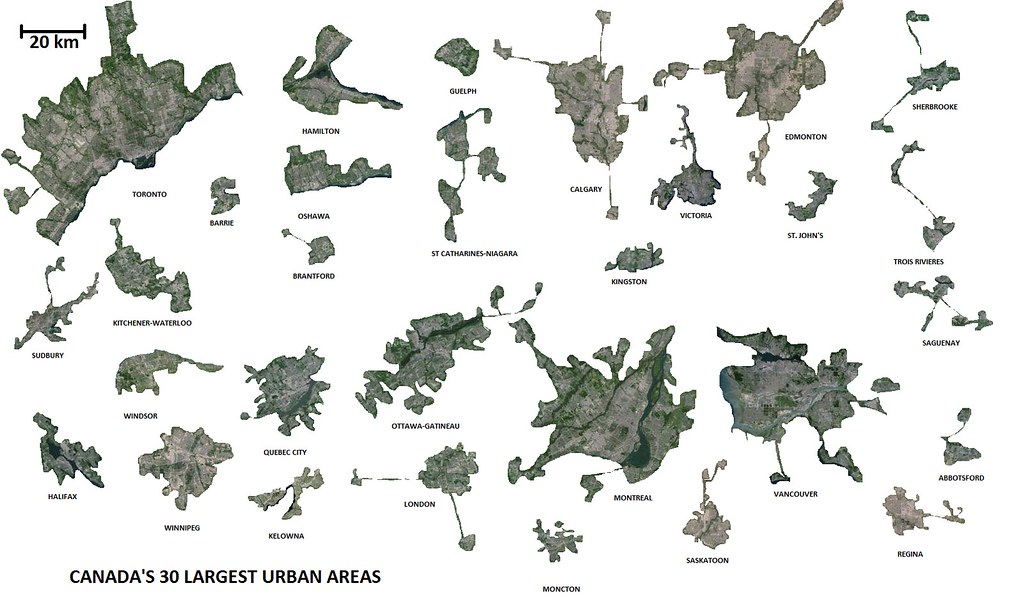middeljohn
New Member
By me. I posted this on SSP a couple weeks ago, but I think it's appropriate to share it here as well. I adjusted all the cities so that they are to the exact same scale +/- 3% for some of the smaller ones. The big 6 are all to scale. Yes, I know I left a couple greenfields in for some cities by accident, but it's not a significant amount. I think it's interesting what a behemoth Toronto is. I isolated Oshawa and Hamilton, but obviously it's all one connected urban area. Edmonton and Calgary are both simply massive for their populations.






